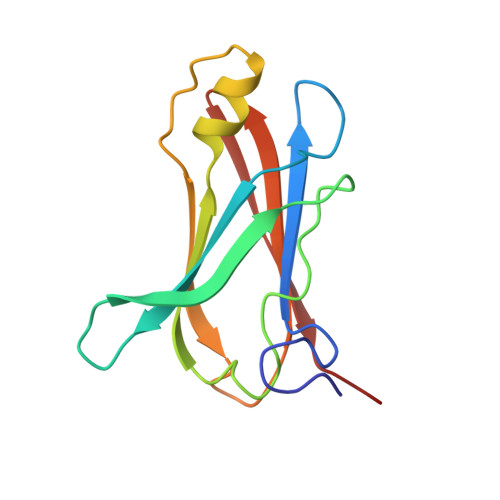Tertiary structures of amyloidogenic and non-amyloidogenic transthyretin variants: new model for amyloid fibril formation.
Schormann, N., Murrell, J.R., Benson, M.D.(1998) Amyloid 5: 175-187
- PubMed: 9818054
- DOI: https://doi.org/10.3109/13506129809003843
- Primary Citation of Related Structures:
1B0W, 1BZD, 1BZE, 1TSH, 2TRH, 2TRY - PubMed Abstract:
The most common form of hereditary systemic amyloidosis is familial amyloidotic polyneuropathy associated with single amino acid changes in the plasma protein transthyretin. So far, high resolution structures of only three amyloidogenic variants (Met30, Ser84, Ile122) and one non-amyloidogenic variant (Thr109) have been reported complemented by X-ray fiber diffraction studies and image reconstruction from electron micrographs of amyloid fibrils. To investigate the role of structural factors in this disease, we extended our studies to other transthyretin variants. We report crystallization and structural investigations of three amyloidogenic (Arg10, Ala60, Tyr77) and two non-amyloidogenic variants (Ser6, Met119). The similarity of these structures to normal transthyretin does not give direct clues to the fibril forming process. Since transthyretin amyloid fibrils contain a major fragment starting at position 49, besides the intact molecule, we calculated the solvent accessibility of residue 48. Indeed, all amyloidogenic variants show an increased main chain solvent exposure when compared to normal transthyretin and non-amyloidogenic variants, which can be postulated to result in increased susceptibility to proteolysis. After limited proteolysis, dimers are incapable of reassociation to native tetramers. We present a model for amyloid fibril formation based on formation of fibrils from N-terminal truncated dimers as building blocks.
- Department of Medical and Molecular Genetics, Indiana University School of Medicine, Indianapolis 46202, USA.
Organizational Affiliation:
















